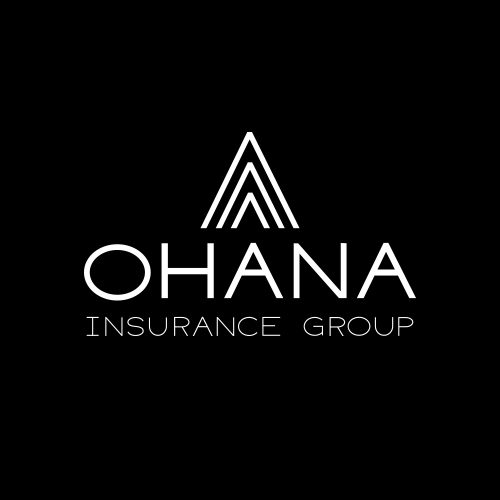Blog
Stay up-to-date with our most recent news.

By Curtis Rock
•
December 2, 2024
Insurance Loss Runs are detailed reports provided by an insurance company that show the claims history of a policyholder over a specified period. These reports typically include information about past claims, including the nature of the loss, the amount paid out, any reserves set aside for future payments, and whether the claim was closed or is still open. The period covered by a loss run can range from one year to several years, depending on the insurer and the type of insurance. Key Elements in an Insurance Loss Run Report: Claim Number: A unique identifier for each claim. Date of Loss: The date when the loss or incident occurred. Claim Description: A brief explanation of the nature of the claim. Total Incurred: The total amount the insurer has paid or reserved for future payments related to the claim (this includes both paid claims and reserves). Paid Losses: The total amount already paid to cover the claim. Open or Closed Status: Whether the claim is still under review (open) or has been settled (closed). Reserve Amount: An estimate of what the insurer expects to pay in the future for claims that are still open. Why Insurance Loss Runs Are Needed: Underwriting and Pricing: Risk Assessment: Insurers use loss runs to evaluate the risk associated with providing coverage to a particular policyholder. If a company or individual has a history of frequent or high-cost claims, they may be seen as a higher risk, which could result in higher premiums. Pricing Adjustments: The frequency and severity of past claims can influence premium calculations. Loss runs help underwriters adjust premiums based on a client’s actual claims history rather than relying on generalized industry statistics. Policy Renewals: Loss runs are crucial during policy renewal periods, as they allow both the insured and the insurer to review past claims and assess whether the current coverage levels, terms, and premiums are still appropriate. Claims Monitoring: For the policyholder, loss runs provide a comprehensive view of past claims, helping to identify trends or recurrent issues that may require attention (such as improving safety measures or adjusting business practices). They also allow businesses to track claims progress and ensure that insurers are adhering to their obligations for ongoing claims. Proof of Claims History: In the case of switching insurers or applying for new coverage, loss runs serve as proof of the insured's historical claims performance. This can help secure better terms or premiums when moving between providers. It is often required by other insurers to evaluate whether they are willing to offer coverage to a new policyholder or to adjust the premium based on previous claims data. Risk Management: By reviewing loss runs, companies can identify areas where they might need to improve risk management strategies. For example, frequent claims for property damage might indicate a need for better facility maintenance or security, while multiple employee injury claims might point to a need for enhanced workplace safety protocols. Legal and Financial Planning: Loss runs can also be valuable for legal and financial professionals. If there’s an ongoing legal case related to a claim, having access to historical claims data can be useful for understanding the potential financial impact and assessing liability. In summary, insurance loss runs are essential for effective risk assessment, premium pricing, and claims management. They provide a historical record of a policyholder's claims experience, which helps both insurers and policyholders make informed decisions about coverage, premiums, and risk management strategies.

By Curtis Rock
•
November 12, 2024
South Texas is a region prone to hurricanes and tropical storms, which can cause significant property damage. Texas Windstorm Insurance Association (TWIA) is a state-created insurance pool designed to provide property insurance coverage in areas of Texas that are not adequately served by private insurers. Here's why South Texans should consider TWIA insurance: Protection Against Catastrophic Storms: Hurricanes and tropical storms can cause extensive damage to homes and businesses. TWIA provides coverage for wind and hail damage, which are common perils in the region. Government-Backed Security: TWIA is a state-backed entity, offering a level of security and stability. This means that policyholders can have confidence in their coverage, especially during times of significant natural disasters. Comprehensive Coverage: TWIA offers a range of coverage options to meet the specific needs of homeowners and businesses. This includes coverage for dwelling, personal property, and additional living expenses. Financial Peace of Mind: By having TWIA insurance, South Texans can protect their most valuable asset: their homes. This can provide significant peace of mind, knowing that their property is protected from potential losses. It's important to note that standard homeowners insurance policies typically exclude coverage for wind and hail damage in coastal areas. TWIA is a specialized insurer that fills this gap, providing essential protection for South Texans. If you live in a coastal area of Texas, it's crucial to understand your insurance needs and consider TWIA as a viable option to safeguard your property. If you have questions about Windstorm Insurance, please give us a call at our office in Corpus Christi at 361-334-0530. Quotes are free of charge!

By Curtis Rock
•
November 12, 2024
When you purchase "full coverage" insurance, you might assume you're completely protected from any potential financial loss related to a car accident. In fact, at Ohana Insurance Group, LLC, we prefer to NOT use the term "full coverage" because it's not usually what people think it is. However, this common misconception can lead to significant out-of-pocket expenses. Let's delve into why full coverage isn't truly full coverage. What Does "Full Coverage" Actually Mean? Full coverage insurance typically includes: Collision Coverage: Covers damage to your vehicle caused by a collision with another vehicle or object, regardless of fault. Comprehensive Coverage: Covers damage to your vehicle caused by non-collision events, such as theft, vandalism, hail, or hitting an animal. Liability Coverage: Covers damage or injury you cause to others in an accident. The Missing Pieces While these coverages are essential, they don't account for every possible scenario: Deductibles: You'll need to pay a deductible before your insurance kicks in for collision and comprehensive claims. Rental Car Reimbursement: This coverage is often optional and may have limitations on the daily rental rate and rental period. Roadside Assistance: While some policies include basic roadside assistance, more comprehensive coverage may require additional fees. Gap Insurance: If your vehicle is totaled, gap insurance covers the difference between your car's actual cash value and the outstanding loan balance. Medical Payments Coverage: This coverage pays for medical expenses for you and your passengers, regardless of fault. However, it may have limits, and you might need additional health insurance to cover larger medical bills. How to Maximize Your Coverage To ensure you're truly protected, consider the following tips: Understand Your Policy: Read your policy carefully to know exactly what's covered and what's not. Choose the Right Deductible: A higher deductible can lower your premium, but it means you'll pay more out of pocket for claims. Consider Additional Coverages: Explore optional coverages like rental car reimbursement, roadside assistance, and gap insurance. Review Your Policy Annually: Your insurance needs may change over time. Review your policy annually to ensure it still meets your needs. By understanding the limitations of full coverage insurance and taking steps to maximize your protection, you can safeguard your finances in the event of an accident. We are here to assist you if you have any questions you can call our office at 361-334-0530 and we would be pleased to review your current policies. We are located at 3765 South Alameda in Doddridge Plaza in central Corpus Christi.

By Curtis Rock
•
October 10, 2024
One of the most common questions I get from potential clients is "How much is my insurance for XYZ going to cost?" It could be their business insurance coverages, their car insurance, or their boat. I wish I had a simple and instant answer for them, but unfortunately there is a lot more information required. Below, I have outlined some basic information you should have prior to requesting a free insurance quote for Property, Autos, and Business. Our Insurance Agency is located in Corpus Christi, Texas where the majority of our business is conducted. Corpus Christi has its own identity and associated risks that present unique challenges to Insurance Underwriting such as climate and socioeconomic conditions. It's not as simple as just asking "how much will my insurance cost for this car, or this house, or my entire business" because many factors come into play. Property Information Type of Property: This includes whether it's a home, apartment, commercial building, or other structure. Location: The address of the property is crucial for determining factors like risk of natural disasters and theft rates. Construction: The materials used in building the property, such as brick, wood, or stone, can affect insurance premiums. Age: Older properties may require additional coverage or have higher premiums due to potential wear and tear. Square Footage: The size of the property influences the amount of coverage needed and potential risks. Security Features: Any security measures, such as alarms, surveillance systems, or gated communities, can help lower premiums. Coverage Details Desired Coverage Limits: Specify the amount of coverage you want for both property damage and liability. Deductibles: Choose the deductible amount you're comfortable with. Higher deductibles generally result in lower premiums. Additional Coverages: Consider any extra protections you may need, such as flood insurance, earthquake coverage, or personal belongings coverage. Personal Information Contact Information: Provide your name, address, phone number, and email address. Claim History: Disclose any previous insurance claims, including the nature of the claims and the insurance company involved. Policy History: If you have existing insurance policies, provide information about them, such as the insurer, policy numbers, and coverage amounts. Financial Information Payment Options: Indicate how you prefer to pay your premiums, such as monthly, quarterly, or annually. Payment History: If you have a history of late payments on other accounts, it may affect your insurance rates. When seeking auto insurance quotes, having the following information ready will help streamline the process and ensure you receive accurate estimates. Vehicle Information Make and Model: The specific brand and model of your vehicle. Year: The year your vehicle was manufactured. Mileage: The total number of miles your vehicle has traveled. Usage: How often you drive your vehicle, such as daily commuting, occasional use, or pleasure driving. Garage Location: Where your vehicle is primarily parked. Driver Information Age: Your age and the age of any additional drivers on the policy. Driving Experience: How long you've been driving and any previous driving experience. Driving Record: Any accidents, traffic violations, or suspensions on your driving record. Occupation: Your occupation, as some professions may affect your insurance rates. Marital Status: Your marital status, as it can sometimes impact insurance premiums. Coverage Detail s Desired Coverage Limits: Specify the amount of coverage you want for bodily injury liability, property damage liability, comprehensive coverage, and collision coverage. Deductibles: Choose the deductible amounts you're comfortable with for comprehensive and collision coverage. Additional Coverages: Consider any extra protections you may need, such as uninsured/underinsured motorist coverage, rental car reimbursement, or roadside assistance. Payment Information Payment Options: Indicate how you prefer to pay your premiums, such as monthly, quarterly, or annually. Payment History: If you have a history of late payments on other accounts, it may affect your insurance rates. By providing this information to insurance providers, you can help them accurately assess your risk and provide you with personalized auto insurance quotes that meet your specific needs and budget. Business Information Business Details Business Name: The legal name of your business. Business Type: The type of business you operate (e.g., sole proprietorship, partnership, corporation). Business Location: The address of your business premises. Number of Employees: The total number of employees working for your business. Annual Revenue: Your business's annual sales or income. Industry: The specific industry in which your business operates. Risk Assessment Operations: A detailed description of your business operations, including any hazardous activities or materials. Property: Information about your business property, such as the size, construction, and security measures. Claims History: Any previous insurance claims your business has filed. This is usually in the form of "Loss Runs" that needs to be requested from your current or former Agents. Coverage Needs General Liability: The level of coverage needed to protect your business from lawsuits due to property damage, bodily injury, or personal injury. Property Insurance: The amount of coverage required to protect your business property, including buildings, equipment, and inventory. Workers' Compensation: If applicable, the level of coverage needed to provide benefits to employees injured on the job. Commercial Auto Insurance: If your business owns or leases vehicles, the coverage needed to protect your vehicles and drivers. Professional Liability (Errors and Omissions): If applicable, the level of coverage needed to protect your business from claims of negligence or errors in professional services. Financial Information Payment Options: Indicate how you prefer to pay your premiums, such as monthly, quarterly, or annually. Payment History: If you have a history of late payments on other accounts, it may affect your insurance rates.

Ohana Insurance Group LLC provides a diverse selection of insurance products for personal and commercial lines in Corpus Christi, Texas.
Commercial Insurance in Corpus Christi, Texas
Auto Insurance in Corpus Christi, Texas
Home Insurance in Corpus Christi, Texas
General Liability Insurance in Corpus Christi, Texas
Professional Liability Insurance in Corpus Christi, Texas
Contact us
Menu
© All rights reserved

